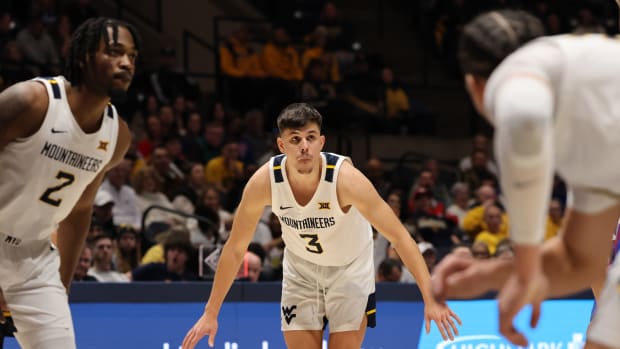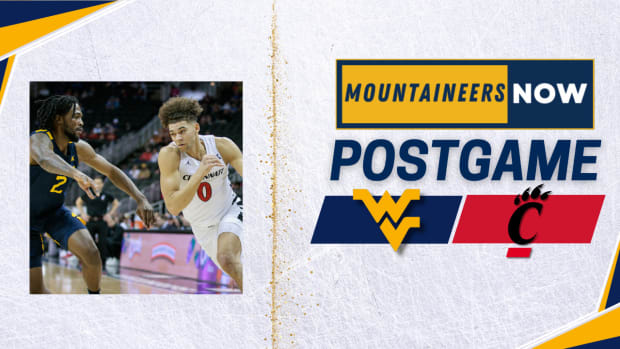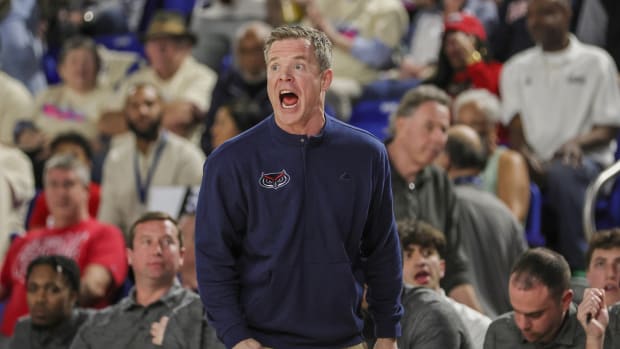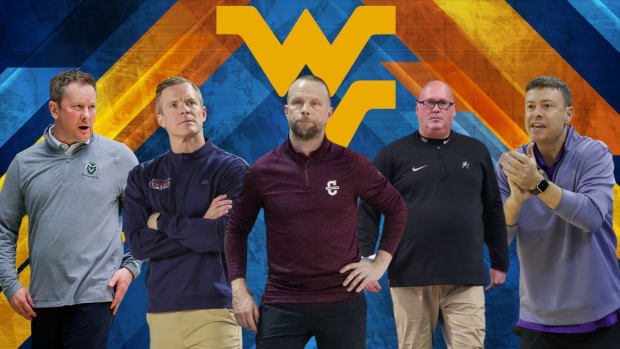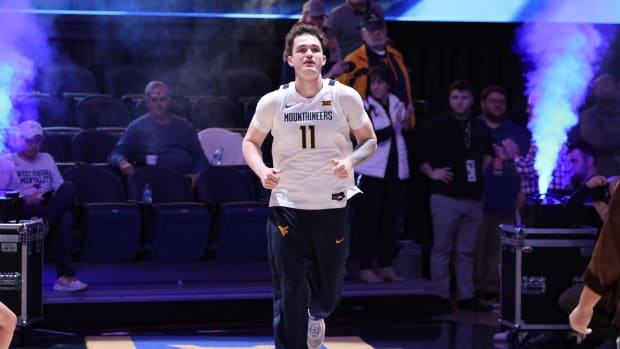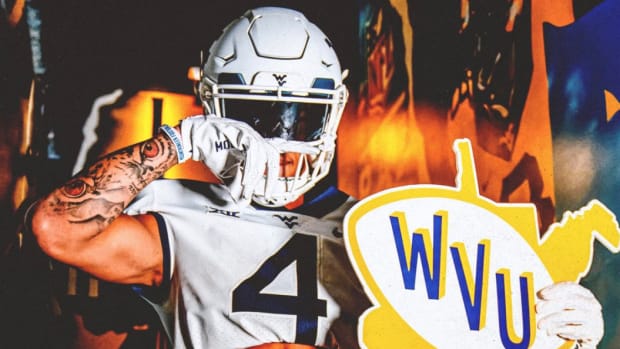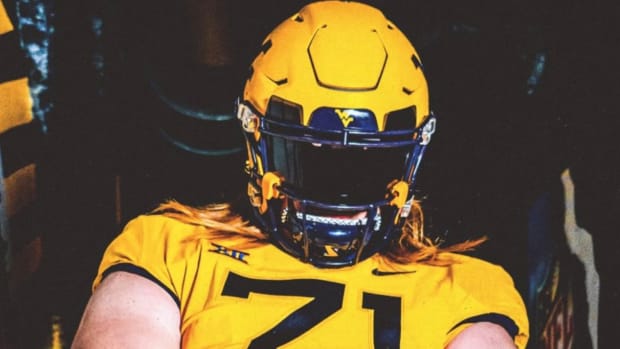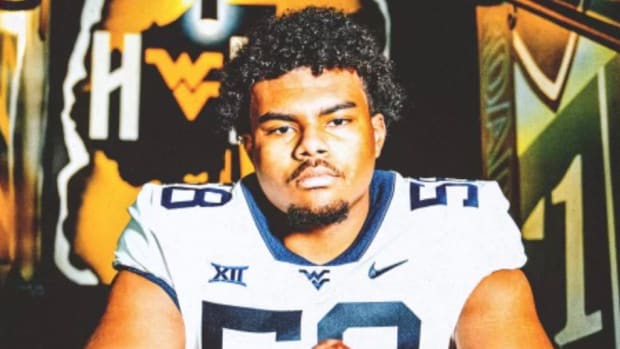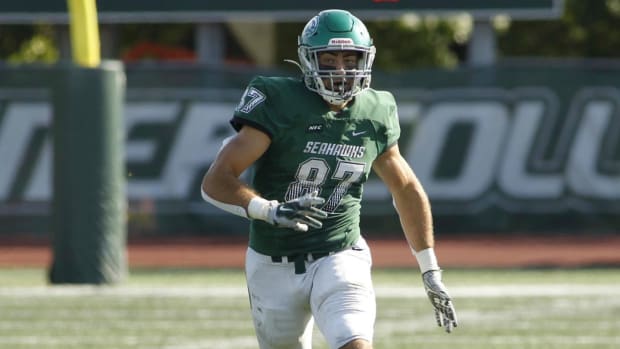Transfer Portal Volatility Has Allowed WVU Sports to Stray from Appalachian Values
Mountaineers are born to roam... but issues arise when they stray too far from the country roads.
WVU athletic teams have always had a reputation for gritty play; that attitude seemed to emanate from the programs' players. It felt, at least to fans, as though each student-athlete was not simply playing for wins and losses, but for the entire state of West Virginia. WVU sports became a watering hole for 1.8 million people, and the athletic teams' cultures suggested that student-athletes respected the underdog mentality that they played for.
The NCAA transfer portal ruined that.
West Virginia is the only state that lies entirely within the Appalachian Mountains. Deep in the hills of the Mountain State live people who believe in hard work and reliance on community. Mountaineer fans have proven to be that demographic, so why do the student-athletes representing West Virginia seem to be falling short of that identity?
Statistically, it's because WVU's revenue-building sports are not being lead by student-athletes with Appalachian blood.
Between football and men's basketball's 111 currently-rostered individuals, a mere 32 were either born in Appalachia or spent time playing among the mountains. That's 28 percent, and Neal Brown's recent, in-state, recruiting push accounted for 16 student-athletes (14 percent) alone.
Attempting to superimpose a "blue collar" mentality on student-athletes who have no affiliation with the culture has proven a sizeable issue for both Brown and Bob Huggins. These two coaches, specifically, have chosen to maintain gritty, hard-hitting philosophies within their programs, but there's a disconnect. The excitement for styles like Press Virginia has disintegrated, and the volatility of the transfer portal is largely to blame.
Since Oct. 2018 when the idea of the transfer portal came to fruition, coaches have been working with a penalty. How does a coach define the kind of culture he or she wants when the roster is constantly shifting? How does a recruiting staff adequately pitch a malleable culture to a prospective student-athlete?
"I try to look at it through a fan's perspective," Brown said. "My concern with the multiple transfers is where you're going to have some fan apathy. Where they don't know the players on your roster. Professional sports, you at least have a good idea of how many years your top players are going to be there, because they have a two-year contract or a three-year, but they could always be traded. You, at least for the most part, have an understanding. If I'm a Penguins fan, I've got an understanding of [Sidney] Crosby, how many years he's going to play and what his contract looks like.
"In college, you used to sign a kid and, you know, you're going to watch him as a freshman and then he's going to grow and be a senior. Well, that's not the case. From a fan apathy standpoint, my concern is [the WVU fanbase] not going or not watching because they don't know who's going to be on the team. I think the decision-makers have got to look at that."
It's difficult, as a fanbase, to back a team of players that see the program simply as a jumping-off point to bigger things. The predominantly self-centered subtext behind an active transfer portal window indicates that players no longer hold any allegiance toward programs and coaching culture. They're simply stepping stones to "the league" or a stronger program. Transfer players also bring with them a certain way of approaching the sport that may not gel with their new team's mindset. That's quickly become a point of contention of coaches dealing with new, older players.
Professional sports drafts have scouts that evaluate player personalities and draw conclusions about viability within already-established cultures. The college athletics transfer portal doesn't put enough emphasis on that point, and team cohesion falls on the sword because of it.
"When you get the guys from the transfer portal, you're bringing a lot of different personalities to the table," Josh Eilert, WVU Men's Basketball assistant coach and former Assistant Athletics Director for Basketball Operations, said. "In a perfect scenario, you develop guys and you work through it for four years and the guys at the freshman and sophomore levels really build up to learn the first couple years. Now, it's like an instant gratification. Everybody's trying to come together immediately, and that's probably where the most struggle is when you're trying to develop your roster and win with your roster right away."
In nearly every single study that the NCAA and college athletics statisticians have conducted, men's basketball suffers the highest year-to-year roster turnover, and it's not particularly close. In 2020-21, men's basketball lead every other DI sport in percentage of transferred student-athletes, according to the NCAA's transfer portal research. Women's basketball, the second-most saturated sport, was more than 10 percent behind.
The process of roster maturation is swiftly becoming obsolete, and thus, team culture is taking a hit. According to a tweet from ESPN's Bill Connelly, the Big 12 is, and has been, rife with transfer activity: approximately 16.1 players per football program left prior to the 2021 season, and the passing of name-image-likeness laws encouraged student-athletes to pursue opportunities, that, at times, didn't exist, at other programs.
When student-athletes decide to transfer two, three, or four times, they effectively become a ship searching desperately for a port. Even if the culture of a new school doesn't perfectly align, it's still superior to being one of 51 percent of transfer portal applicants who are never picked up by another program.
"I don't think the decision-makers really had the vision to understand how the transfer portal and name-image-likeness, which is really roster bonuses, have intermingled," Brown said. "I don't think they had the vision for that. As coaches, we kind of saw it coming, but that's what happened. Now, when you start thinking about these transfer situations, I don't think we're ever going to go back to, 'You have to sit out'. I could argue both sides of that... Multiple transfers, it's a little bit of an issue. How do you regulate it? I don't really know.
"The way I think about the portal is almost like a bank account," Brown continued. "When you go through this portal window, and this is the first time we've really had a window, the way I'm thinking about it is that you've got deposits and withdrawals. You hope that your deposits are more than your withdrawals, right? I hope that we're bringing in more than we're losing... The portal works both ways."
West Virginia University athletics has been known to offer struggling JUCO and community college players an opportunity for upward mobility, even becoming a nation-leading JUCO landing spot during the Big East days, but there are now more four-year to four-year student-athletes transferring than ever.
Add COVID-19 eligibility and redshirt seasons, and a roster ordinarily composed of 18-22-year olds now boasts 23-, 24-, and 25-year olds. Aside from the obvious skill development discrepancies between an 18-year-old and a 25-year-old, the latter brings a specific type of ball he or she likes to play. There's a high chance that it doesn't amalgamate with his or her new program. How much leniency is appropriate for coaches to bestow on their newest roster additions?
"When you put together a bunch of guys who have come from different ways of doing things, we're trying to get those guys to understand what we want done," Huggins said. "The same way with all of them... They've seen a lot of things. Whatever [opponents] throw at us, I think we'll have guys with better recognition of what happened in the past, and what you need to do to attack it... Our guys, because they've had so many ways of doing things, we may not all do things the same way."
Whether the kinks are worked out during summer or winter workouts, or halfway through conference play, the transfer portal remains an Achilles Heel for coaches trying to nail down the kinds of program cultures they seek to lead.
The best coaches will learn how to surf the waves of the transfer market, hoping desperately all the while that they don't drown.
You can follow us on Facebook & Twitter for future coverage:
Facebook - @WVUonSI
Twitter - @MountaineersNow and Julia Mellett - @JuliaMellett
